Ihr Warenkorb ist gerade leer!
White Paper Competition Analysis
Download the Competitive Analysis (pptx) tool
Competitive analysis shows our relative advantages over the competition. We compare the strengths of the competitor with our weaknesses and their weaknesses with our strengths. Every employee must be able to recite these benefits by heart at any time!
In the process described here, we first summarize the essential characteristics of a competitor into a profile. Then we create a profile of the strengths and weaknesses that every salesperson and every employee who deals with customers has to memorize.
Additional knowledge of competitors will provide additional tools such as the value proposition.
Note : I like to use the term competition – because competition comes from the Latin «concurrere» – to run together; and that’s about it.
Procedure
1. List of current and future main competitors
List all competitors that are strategically relevant to your business. We distinguish four groups:
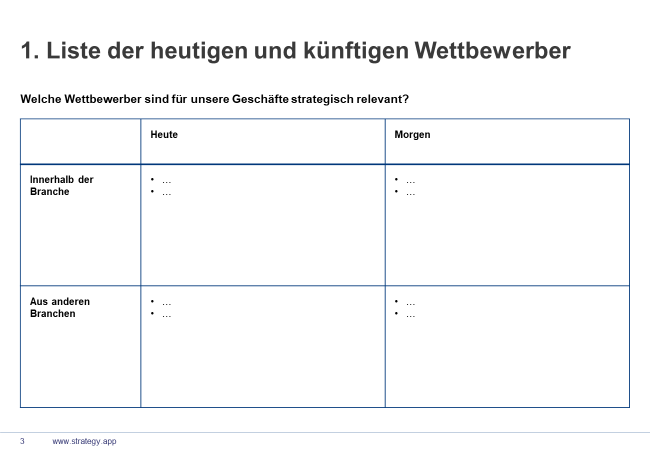
- Competitors today within the same industry
- Competitors tomorrow within the same industry – e.g. from other regions
- Competitor today from other industries
- Competitor tomorrow from other industries
The competitors from other industries are the most dangerous. For example, the «Enzyclopedia Britannica» by PC with the Encarta displaced – and that was very fast and none of the former typewriter manufacturer has considered the entry of PCs. The most dangerous competitors today for the automotive industry are not the other manufacturers, but new providers we Google, Apple or Uber.
2. Overview
For each competitor, create an overview on a sheet by template (this is to be memorized):
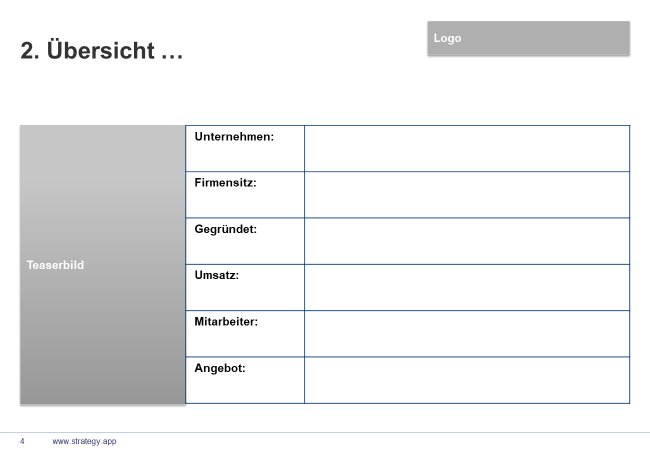
3. Key data
The key data is used to record the essential characteristics of the competitor. Do not write novels, but not just embroidery, but try to make one or two clear statements. Above all: do not just copy the details from the website of the competitor! First, these are mostly inaccurate and not very specific, and secondly, any learning effect is lost – and that’s a pity about your time.
We’ve listed a list of topics below so you can customize the template as needed.
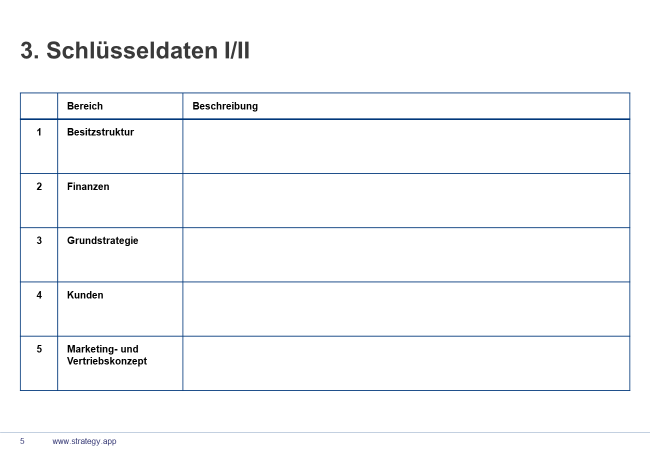
4. Strategic Comparison
The strategic comparison presents the 3 main strengths and main weaknesses of the competitor against the 3 main weaknesses and main strengths of your company. Enter a maximum of 3 topics here and formulate them in such a way that they can be memorized by your employees. Ask them in between or distribute them on colored cards, which have space in the wallet.
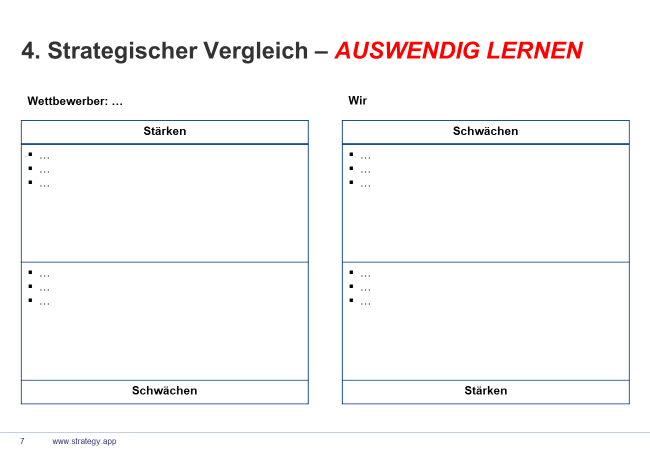
5. The analysis topics
We have listed some topics for you in the template. You can supplement, adapt or replace these. The following list should give you some ideas or hints:
Ownership Structure
- Ownership structure of the company
- Capital structure, total market value and ownership
- Participations, major shareholders and other shareholder participations
- Legal form
Financials
- Sales, earnings in ROI, ROS and EBIT
- Order situation and order backlog
- Liquidity
Strategic key figures
- Market position and market share
- Cost position, efficiency, experience curve
- Quality position and customer value
Basic strategy
- Current situation and starting position
- Growth strategies, acquisition strategies, cooperation
- Regional strategies and regional presence
- Strategic alliances, acquisitions, JV, cooperations
Customers
- Main customers, main markets
- Sales by segments or by region
- References from major customers
Sales and marketing concept
- Sales organization
- Sales and distribution channels
- Marketing activities
- Brand strategy
Product and service portfolio
- Product lines, product range, brands
- Standards, certifications
- Service, repair, spare parts
Core competencies
- Core competence areas today and tomorrow
- Special products, services
- Processes (supply chain, sourcing concepts)
Production and production concept
- Organization of locations, processes
- Integration strategy – vertically / horizontally
- Strategy of the logistics organization, delivery times
- Local production (production location, products)
- Production capacity
Technologies and Innovation
- Ability to innovate
- Expenditure on research and development, patents
- New technologies
- New products in operation
- New technologies in production
Competitive Analysis in STRATEGY.APP
In the setup we enter all competitors that occur during the strategy development. The basic data usually relate to the same level as our own company; i.e. you describe an entire company or the division of a group.
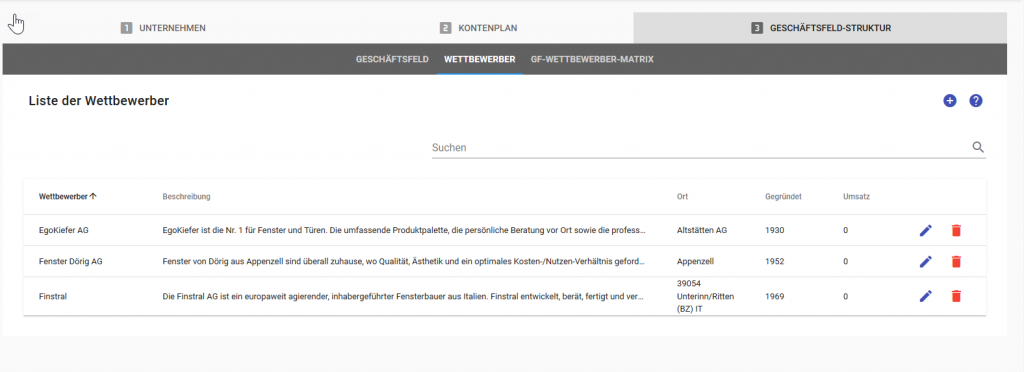
Then we assign the competitors from the overall list to the individual BU. The question is, where does a competitor in the market compete with us? With a simple click, a record is created for the corresponding BU. Only the name of the competitor is taken over. All other and further data are dealt with in the BU-strategy. If a competitor assignment is deleted, the record from the BU-strategy is deleted again.
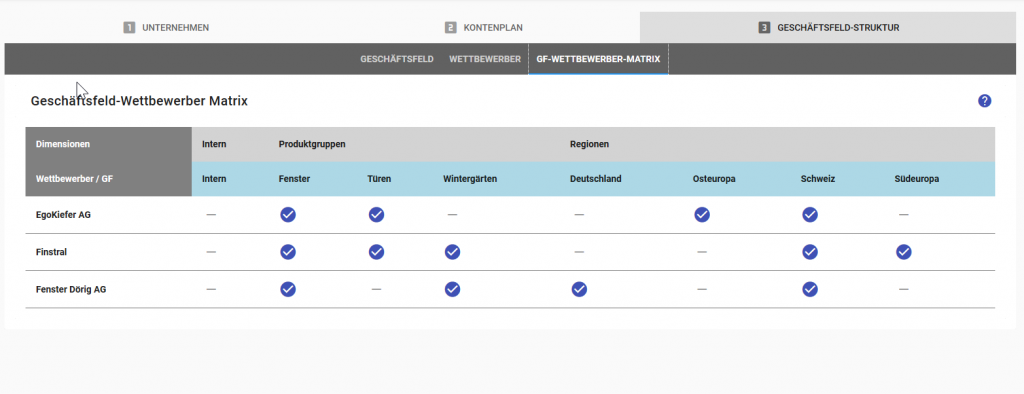
We can now analyze the competitors at the corporate level and / or at the business field level and derive SWOT elements for the SWOT. Here we show the procedure at the company level.
All competitors we’ve covered are listed at the company level. The description fields are taken from the configuration.
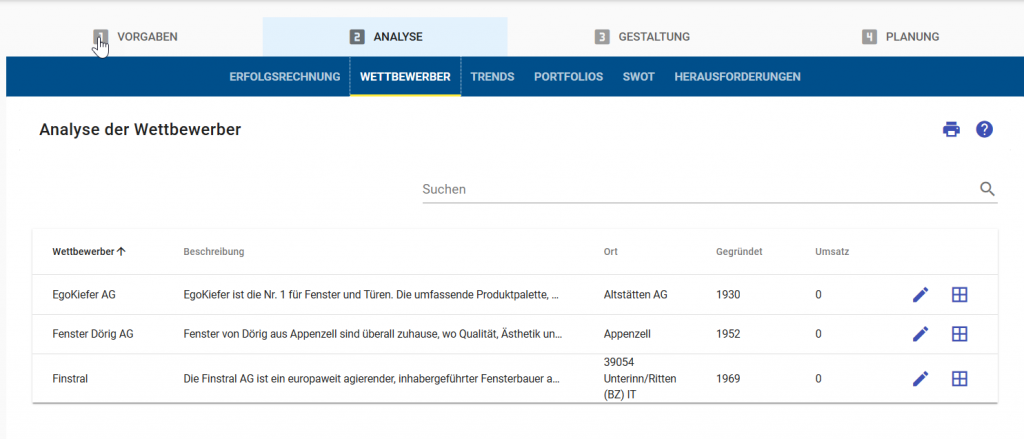
There are two dialog windows available:
- Edit: Enter and customize competitor data descriptions
- SWOT: Enter each of the competitor’s three strengths and weaknesses and the corresponding weaknesses and strengths of your company that they face.
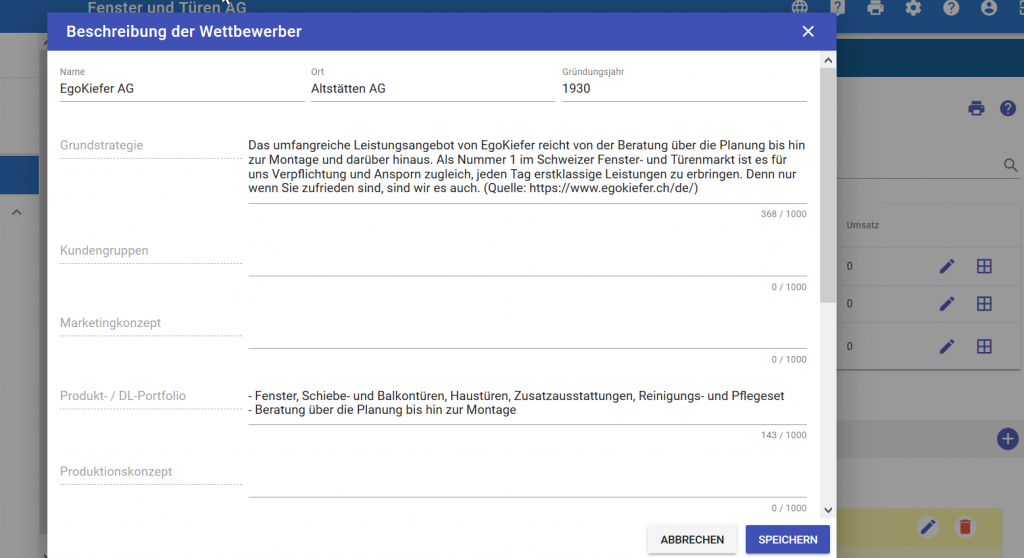
For each competitor, the 3 strengths are contrasted with our weaknesses and the 3 weaknesses are our strengths
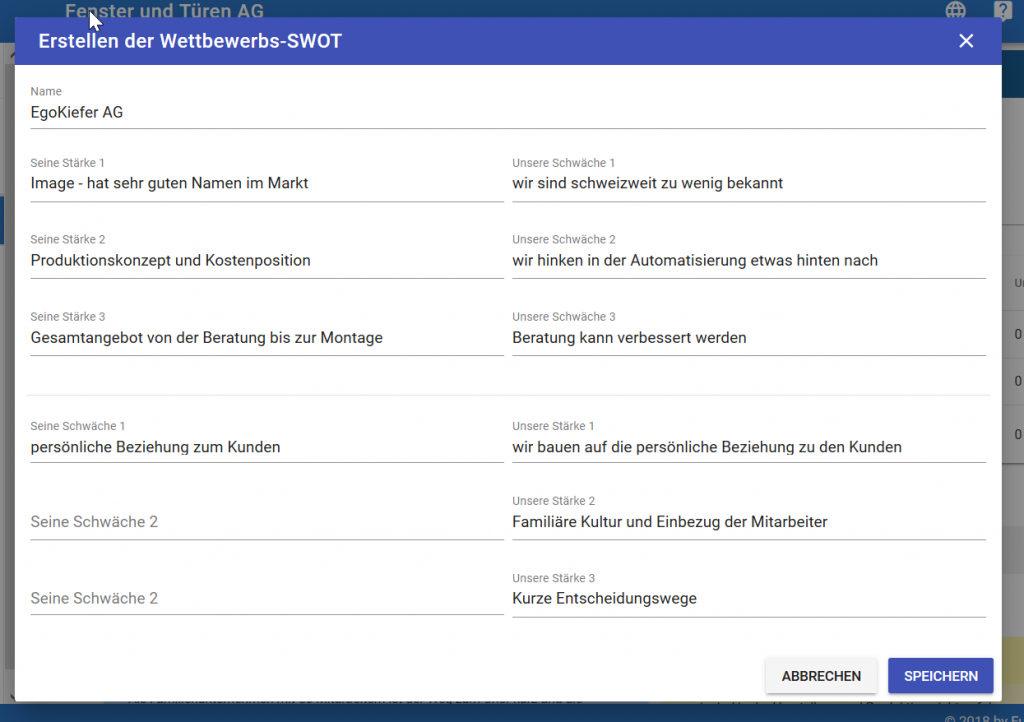
The same procedure can also be used for every business field.
Download the Competitive Analysis (pptx) tool
Schlagwörter:
Schreiben Sie einen Kommentar